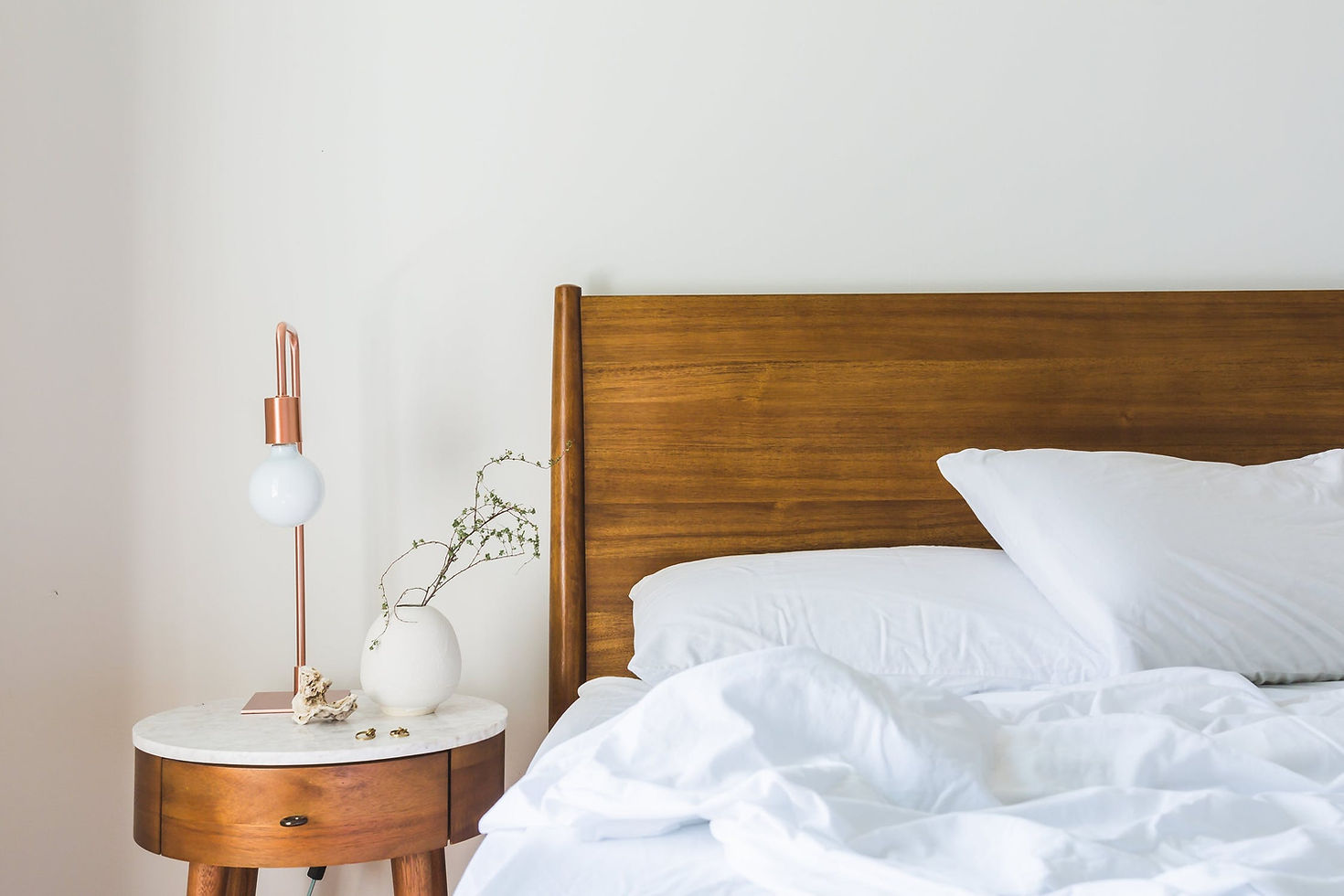
Here are some fantastic tips to ease your way into a restful night’s sleep!
- misrakadioglu
- Mar 10
- 3 min read
Here are some helpful tips for a smoother transition to sleep:
* Establish a Relaxing Bedtime Routine: Begin preparing for sleep at least an hour before your desired bedtime. This could involve dimming the lights, taking a warm bath, or reading a book.
* Mindful Eating: Allow ample time for digestion after your last meal. Avoid heavy, rich foods in the evening, as they can disrupt sleep.
* Caffeine Awareness: Monitor your caffeine intake, as it can interfere with sleep. Keep track of when you consume coffee or tea throughout the day.
* Optimize Your Sleep Environment: Ensure your bedroom is cool, dark, and quiet. Proper ventilation is also essential.
* Limit Screen Time: Reduce exposure to electronic devices before bed, as the blue light emitted can suppress melatonin production.
* Aromatherapy: Explore the use of calming essential oils, such as lavender, or light incense.
* Breathing Exercises: Practice deep breathing techniques to activate your parasympathetic nervous system and promote relaxation.
* Mindfulness and Meditation: Incorporate guided meditation or mindfulness practices to quiet your mind and reduce stress.
* Soothing Sounds: Listen to calming music, nature sounds, or healing frequencies to create a tranquil atmosphere.
* Regular Physical Activity: Engage in regular physical activity during the day, as it can contribute to better sleep quality. However, avoid strenuous exercise close to bedtime.
* Consistent Sleep Schedule: Try to go to sleep and wake up at the same time every day, even on weekends. This helps to regulate your body's natural sleep-wake cycle.
Creating an Optimal Sleep Environment:
Preparing your sleep environment is crucial for a restful night. Here's a breakdown of key elements:
* Dimmed Lighting: Reduce bright lights to a minimum. Soft, warm lighting signals your body that it's time to wind down. Consider using blackout curtains to eliminate external light sources.
* Minimize Electronic Distractions: Electronic devices emit blue light, which can suppress melatonin production. Turn off or put away TVs, computers, laptops, and cell phones at least an hour before bedtime. If you must use a device, enable a blue light filter.
* Soothing Sounds: Create a calming atmosphere with relaxing music. Instrumental music, nature sounds, or white noise can help mask disruptive noises and promote relaxation.
* Aromatherapy: Introduce calming scents through incense or essential oil diffusers. Lavender, chamomile, and sandalwood are known for their relaxing properties. Be mindful of any sensitivities or allergies.
* Cool and Fresh Air: Ensure proper ventilation in your bedroom. A cool room temperature, ideally around 18°C, promotes better sleep. Open a window or use a fan to circulate fresh air.
* Declutter: a clean and tidy room, promotes a clean and tidy mind.
* Comfortable Bedding: Ensure your bedding is comfortable. Use breathable fabrics and adjust the number of blankets or layers to maintain a comfortable temperature.
By implementing these strategies, you can create a tranquil sleep environment that encourages restful and restorative sleep.
Effective Breathing Techniques for Promoting Sleep:
These breathing exercises can help calm your mind and body, making it easier to fall asleep:
4-7-8 Breathing Technique:
* This technique is excellent for inducing a state of relaxation.
* Begin by sitting or lying down comfortably.
* Inhale quietly through your nose for a count of 4 seconds.
* Hold your breath for a count of 7 seconds.
* Exhale slowly and completely through your nose for a count of 8 seconds.
* Repeat this cycle at least eight times.
* This exercise helps to slow the heart rate and release tension.
Left Nostril Breathing:
This variation focuses on activating the right hemisphere of the brain, which is associated with calmness and relaxation.
(This method, a part of Alternate Nostril Breathing, helps us calm down quickly and fall asleep more easily. To get maximum benefit, it is recommended to incorporate Alternate Nostril Breathing with all its steps into your life)
* Sit comfortably with a straight spine.
* Use your right thumb to gently close your right nostril.
* Inhale deeply through your left nostril for a count of 5 seconds.
* Exhale slowly through your left nostril for a count of 5 seconds.
* Continue this breathing pattern for several minutes.
This practice is known to cool the body and calm the mind, making it ideal for bedtime.

















Comments